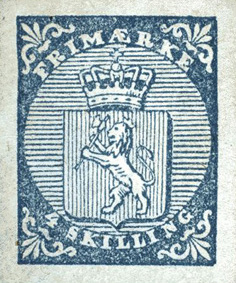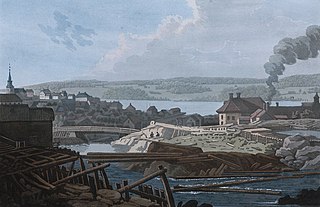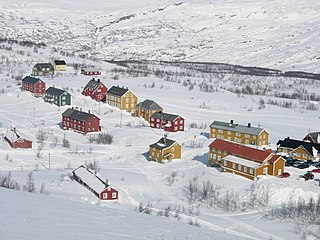
Theodor Kjerulf was a Norwegian geologist and professor at the University of Oslo. He also served as director of the Norwegian Geological Survey.
Type locality, also called type area, is the locality where a particular rock type, stratigraphic unit or mineral species is first identified. If the stratigraphic unit in a locality is layered, it is called a stratotype, whereas the standard of reference for unlayered rocks is the type locality.

Prof Olaf Holtedahl ForMemRS FRSE was a Norwegian geologist. He became a senior lecturer at the University of Oslo in 1914, and was Professor of Geology there from 1920 to 1956.

Slemmestad is a village in Røyken in Asker municipality in Viken, Norway. Slemmestad is located on the west bank of the Oslofjord, west of Oslo.

Oluf Rygh was a noted Norwegian archaeologist, philologist and historian. Oluf Rygh is recognized as one of the founders of professional archaeology in Norway. He led the 1867 excavation of the Tune ship (Tuneskipet)

Anna Paulsdatter Krefting née Vogt (1683-1766), was a Norwegian businesswoman who ran and expanded her family's business enterprises in and around Christiania for over 50 years. Among these enterprises were mines and ironworks, forestry, and trade.

The postal system of Norway dates from 1647, when Christian IV of Denmark-Norway granted a concession to a private company who established the Postvesenet. The Postvesenet primarily provided a way for various parts of the country to communicate with the central government in Christiania. Although Norway came under rule of the Swedish king in 1815, the postal service remained independent of the Swedish post, and continued to gradually established routes throughout the country.

Werner Werenskiold was a Norwegian geologist and geographer. He was a son of Erik Werenskiold and visual artist Sophie Marie Stoltenberg Thomesen (1849–1926), and the brother of Dagfin Werenskiold.

Moss Jernverk was an ironwork in Moss, Norway. Established in 1704, it was for many years the largest workplace in the city, and melted ore, chiefly from Arendalsfeltet. With power from the nearby waterfalls it manufactured many different products. From around the middle of the 1700 century the works were the leading armory in the country and produced hundreds of heavy iron cannons. The first rolling mill in Norway was also located here.

Bjørn Grothaug Andersen was a Norwegian professor of Quaternary geology and glaciology who made foundational contributions to glacial geology and the understanding of climate change.

Sortlandsundet or Sortlandssundet is a strait or sound in Sortland Municipality in Nordland county, Norway. It separates the islands of Langøya and Hinnøya and it connects the Hadselfjorden in the south and the Gavlfjorden in the north. The Sortland Bridge is the only bridge that crosses the 30-kilometre (19 mi) long strait.

Knut Trygve Gysler was a Norwegian equestrian. He was born in Christiania. He competed at the 1920 Summer Olympics in Antwerp, where he placed 9th in individual eventing. He competed at the 1928 Summer Olympics in Amsterdam, where he tied 21st in individual jumping, and placed 11th in team jumping.

Johan Herman Lie Vogt was a Norwegian geologist and petrologist. Vogt was a professor at the University of Oslo and at the Norwegian Institute of Technology.

Museum Nord, Narvik is a museum at Narvik in Nordland, Norway. The museum is an anchor point on the European Route of Industrial Heritage.
Saksenvik is a basic statistical unit in the Nedre Saltdal subarea of the municipality of Saltdal in Nordland county, Norway. European route E6 passes through Saksenvik, part of the way via the Saksenvik Tunnel. Since 2012, the Saksenvik Hydroelectric Power Station has produced electricity in the region.

Jakobsbakken is a clustered settlement in the municipality of Fauske in Nordland, Norway. It is situated south of Lake Langvatnet in Sulitjelma, just above the tree line at an elevation of 600 meters (2,000 ft).

The Kåfjord Copper Works was a company established in 1826 to mine copper in Kåfjord, Norway.
Total sounding (TS) is a sounding method performed as part of geotechnical investigation. The sounding combines conventional rotary-pressure sounding with bedrock drilling, including rotation, ramming and flushing modes. The result indicates sediment stratification, occasionally soil type and may verify depth to bedrock.
Rotary-pressure sounding is a method of testing soil conditions that might be performed as part of a geotechnical investigation. A series of rods, with a specially designed tip, is forced into the ground under downward pressure. The rotation and speed of insertion are maintained at a constant rate, and the amount of force required to maintain that rate is measured. The results can be interpreted to provide information about sediment stratification, and sometimes also the type of soil and the depth to bedrock.
This page is based on this
Wikipedia article Text is available under the
CC BY-SA 4.0 license; additional terms may apply.
Images, videos and audio are available under their respective licenses.

















